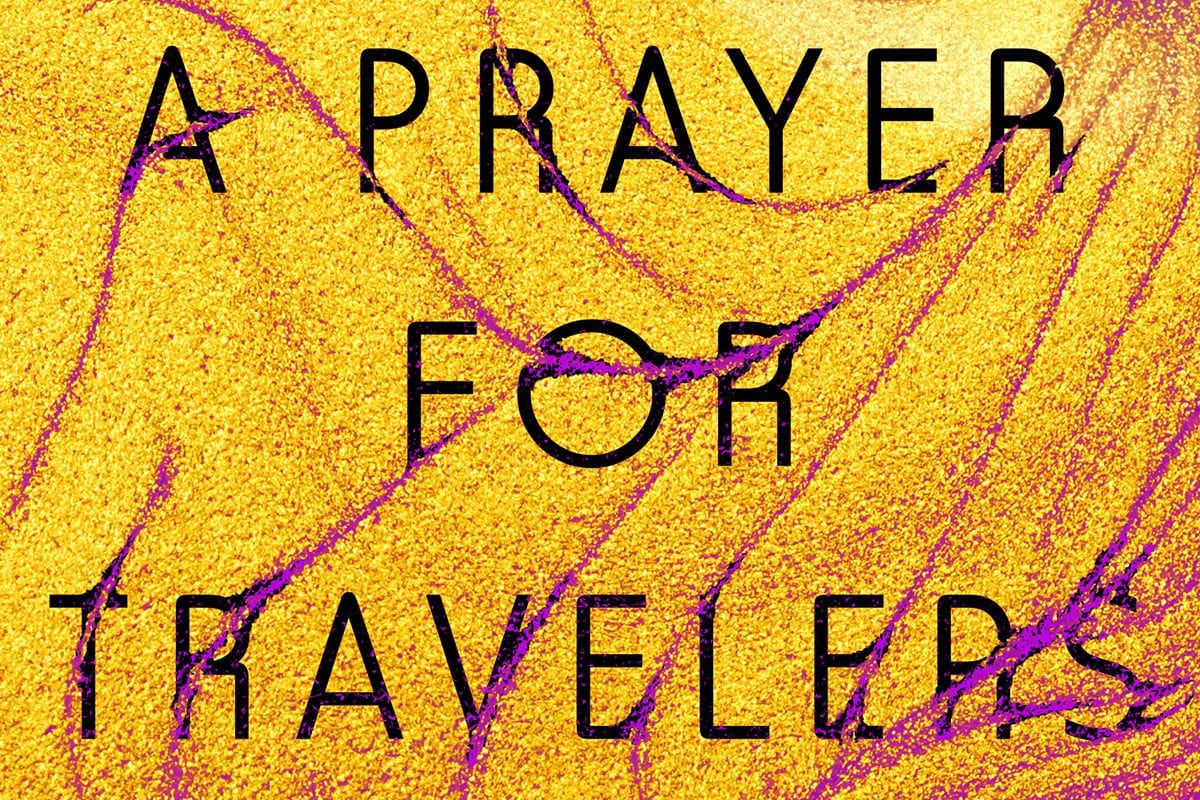
Noted 20th century author and conservationist Edward Abbey, in Desert Solitaire, (McGraw-Hill, 1968) his autobiographical ode to that blistering landscape, writes, “The extreme clarity of the desert light is equaled by the extreme individuation of desert life forms. Love flowers best in openness and freedom.” But what happens when one of those life forms is violently uprooted from the only sandy soil to which she’s ever desperately clung? Can she still survive when that life-sustaining light suddenly gives way to the bitter chill of an unforeseen, impenetrable darkness?
Such is the plight of Cale Lambert, the fascinatingly unmoored narrator of Ruchika Tomar‘s debut novel, A Prayer for Travelers: a naïve teenager thrust by disaster into a brutal world she’s only read about, set adrift along the feral, forgotten backroads of a decaying American Southwest, forced to reckon with an innate need for connection and a past that’s never quite what it seems. Equal parts gritty and subtly heartening, tragically jarring and emotionally resonant, it’s one of the strangest and most enjoyably wrought coming-of-age stories to appear in recent years. That is to say, it’s one hell of a ride.
Abandoned as an infant by an unnamed mother and raised by Lamb, her ailing, codependent grandfather, Cale knows no other life outside of Pomoc, a tiny rural hamlet “flailing helplessly toward modernization”, where, fresh out of high school, she cocoons herself inside a gossamer world of books and the affections of Lamb and their two dogs, Wolf and Trixie. Later, uncharacteristically accepting a job as a waitress at the town’s lone diner, she strikes up a rare friendship with a coworker, the popular, street-smart Penélope “Penny” Reyes, who introduces her to an addictively exciting – and potentially life-threatening – reality lurking just below the surface of the familiar, a secret place of pills and easy money Cale has never previously dared to tread. After a gruesome near-death experience, Penny disappears and Cale embarks on a lonely, desperate quest to find her friend, breaking the self-made chains of a life that, up until now, has only ever been governed by fear and loss.
To give too much more of the plot away would be to spoil the thrill of watching Cale’s mesmerizingly disjointed road to self-discovery unfold, a feat that Tomar accomplishes with enviable ease. Jam-packed with elements of small-town tribalism, ruinous drug use, the myth of Western masculinity, fast-paced violence, casino culture, self-harm, the power of obsession, desire, and burgeoning sexuality, film noir, and even the occasional ghost story, A Prayer for Travelers miraculously manages to maintain its deep focus on its protagonist’s haunted inner life and the sublime details — the slightest touch of skin, the smallest glint of a coal-dark eye – that reveal it. Every moment is pregnant with meaning, with the potential to be both foreboding and transcendent.
Adding further to the novel’s ingenuity, most of the chapters appear out of order (The book opens with Chapter 31 and Chapter 1 doesn’t appear until well into the second act), a tactic that all too often runs the risk of feeling gimmicky or lazy. But in A Prayer for Travelers, this well-planned non-linearity never feels forced; rather than destroying the book’s momentum, it encourages it. Even when the reader knows what’s going to happen, there are enough twists, turns, and startling gut punches along the way to make the many flashbacks not only worthwhile, but necessary to fully appreciating Cale’s story.
Equally impressive is the visual world that Tomar conjures, a marvelously drawn background of creosote and rabbitbrush, pinyon and desert snowberry, a living landscape as romantic as the adventure novels Cale devours, and far more sinister. A place where cougars lurk and mountain wildfires rage against the night sky, where the freeways are “black and hungry, split open like rattlesnakes drying in the sun”, with enough personality to rival any of the ragged souls who populate the novel’s omnipresent gas stations, seedy bars, and hotel rooms. That human tapestry is just as varied and expertly fashioned.
The men and women who populate it – a recently graduated clique whose members still cling to Mean Girls-like affectations, a psychopath snake handler, an ATV-riding lunatic straight out of Mad Max who Cale terrifyingly describes as the “sandman”, bored casino employees, drowsy opioid fiends, nonchalant doctors, an overenthusiastic hostel owner – are characters who might easily be demoted to the realm of caricature. But in Tomar’s deftly, intricately crafted microcosm, they are pleasantly multidimensional, imbued with the same foreboding power and mystery as the desert that birthed them.
Some of Tomar’s stylistic choices leave something to be desired. A few of the chapters are solely comprised of images – a collage of esoteric symbols, a coil of rattlesnakes, a pile of tarot cards – that, while visually appealing and clearly referencing future events, seem largely unnecessary to the overall narrative. Further, it’s hard to imagine even the most well-read, barely-socialized 21st century teenager frequently employing verbs like “gamboled” and “parse”, and casually rolling off phrases like “the clinical approximation of concern” and “mantras of casualty”, or describing diner patrons as “repellent maws masticating paste”. But in the scheme of things, these are only minor interruptions to an otherwise spellbinding story, and thankfully that verbosity never seeps into the dialogue, which is always realistically taut and millennial-appropriate.
During the aftermath of one of her too-frequent brushes with trauma, Cale muses, “If this desert was a mother, she was the type to eat her young.” Coming from a motherless child, it’s a poignant reminder of the dangerous (and irreversible) escape route she’s chosen, the inherent solitude it demands, and the uncertain toll that surviving it might exact. One thing is certain about A Prayer for Travelers, as far as Tomar is concerned: it’s an unforgettable introduction to an immense and addictive new talent with an ear for the most important sound of all: the fractured, fragile pounding of the human heart.

